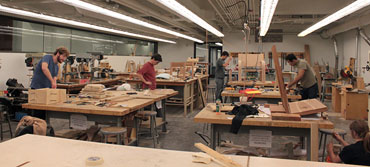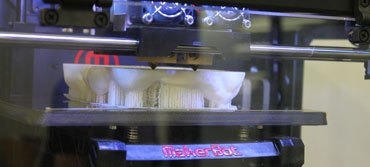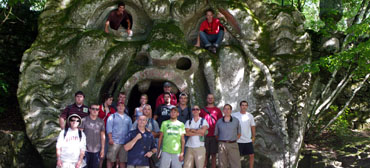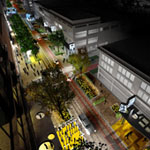Health and well-being have dominated the attentions of people in the United States and around the world since the beginning of the COVID-19 pandemic. The spread of infectious disease, spikes in mental health concerns, and issues of chronic disease and health disparities dominate the news and popular media. One of the most relevant specializations in the architectural disciplines, health and wellness design spans all market segments, including workplace, education, single- and multi-family housing, long-term care, and retail and hospitality design.
The M.Des. concentration in Health and Wellness Design provides advanced study exploring the reciprocal relationship between human health and well-being and the natural and built environments. In 1940, the World Health Organization defined health as “a state of complete physical, mental and social well-being and not merely the absence of disease or infirmity.” While some disagree with the idea that complete health is truly achievable, the definition has proved important in establishing that health is not merely the absence of illness. In parallel, the National Wellness Institute defines wellness as “an active process through which people become aware of, and make choices toward, a more successful existence.” Wellness can be improved through the environment, encouraging lifestyles and supporting individual decision-making.
The Whole Health Institute and the Whole Health School of Medicine and Health Sciences, both located in Northwest Arkansas, provide unique access to transformative, holistic initiatives in physical, mental and spiritual well-being and enable people and their communities to achieve comprehensive wellness. The proximity of the University of Arkansas to the world’s leading retailers and providers of diverse health services provides students unique opportunities in the design and deployment of clinic, pharmacy and wellness-focused retail settings. Northwest Arkansas is also a world-class cycling destination where wellness lifestyles are integrated into the nearby communities, providing an unparalleled exposure to large-scale programming and design strategies.
The M.Des. concentration in Health and Wellness Design offers students unique specializations supported by the Fay Jones School’s architecture, interior architecture and design, and landscape architecture departments and by nationally recognized programs in public health, environmental sciences, and human development and gerontology. This degree concentration is STEM-designated.
Curriculum
Cross-disciplinary, design-focused studio courses form the backbone of the M.Des. curriculum. Along with the studios, elective courses allow students to craft a forward-focused degree program to advance their own unique professional goals.
Sample Curriculum in Health and Wellness Design
Fall Semester (15 credit hours total)
- Advanced Design Studio 1
- Methods of Design Inquiry
- Health and Wellness in the Built Environment*
- Mind, Body and Environment*
Spring Semester (15 credit hours total)
- Advanced Design Studio 2
- Design Leadership
- Nature and Biophilia in Design*
- Behavioral and Social Determinants of Health*
Summer (6 credit hours total)
- Graduate Residency
*The Health and Wellness Design concentration requires students to select four courses (12 credit hours) to support their professional goals. Dependent upon the area of interest and previous coursework and experience, graduate level courses may be selected from Architecture, Landscape Architecture, Interior Architecture and Design, Exercise Science, Public Health, Public Policy, Early Childhood Development, Gerontology or other departments with approval from the Graduate Coordinator.
Faculty
Noah Billig
Jinoh Park
Jennifer Webb
The M.Des. at the University of Arkansas’ Fay Jones School offers design graduates and professionals the opportunity for advanced targeted study. Students in this intensive one-year program will achieve specialized knowledge by investigating critical and emerging issues in advanced design studios, graduate-level electives and a professional residency. Other concentrations in Retail and Hospitality Design, Integrated Wood Design and Resiliency Design are open for enrollment, and additional concentrations are planned.
Contact our Graduate Coordinator to learn more!









